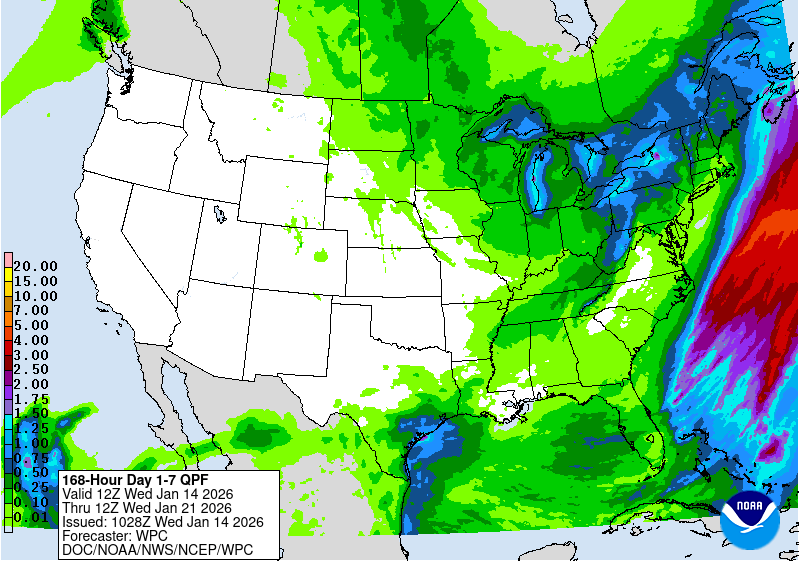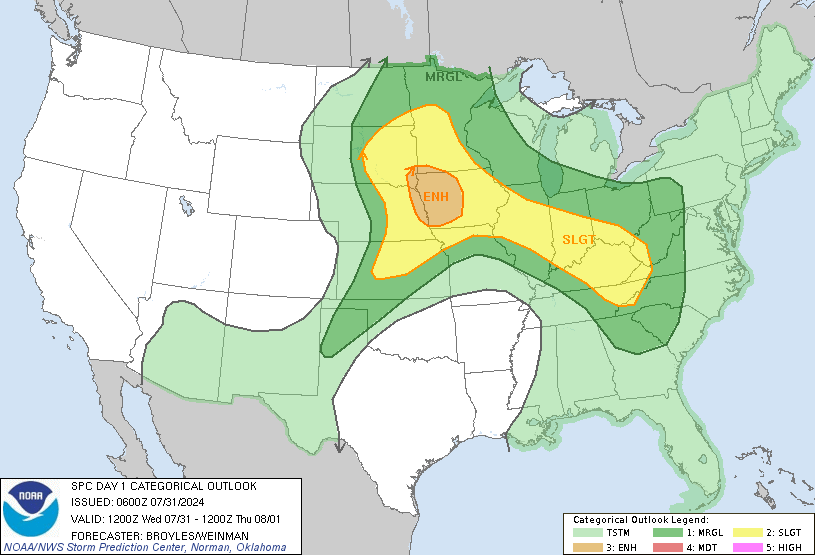Links to Useful Resources
First, A Few Words About Safety. . . .
Some the resources listed below contain links to exciting and interesting videos of extreme weather and its effects. When using these links with students, it is very important to emphasize to them that there was risk involved in obtaining the images. Some of these images were produced through a collaboration of professional meteorologists possessing expertise in the relevant phenomena along with a professional photographer or videographer. It is important to communicate to students that as interesting as the images of various extreme weather are, students should not take risks to either watch, chase, or record severe weather. Instead students should be encouraged to follow the sheltering and safety practices recommended by the National Weather Service and other authorities. Providing this caveat to students is especially important because many behaviors are learned simply by watching other people and then imitating their actions and responses (see Bandura, 1986 for a description of these social-cognitive learning processes). Students who imitate the weather risk-taking behaviors of professionals without fully understanding the risks or how to respond to severe weather could jeopardize their safety and the safety of other people.
National Weather Service Education and Safety Resources
The National Weather Service - Weather Safety page provides descriptive information about various weather hazards such as lighting, tornadoes, hurricanes, and floods. It also provides essential information about weather watches and weather warnings for each hazard. Educational materials about the hazard along with safety or sheltering recommendations are provided as are resources for teachers.The National Weather Service - Education page uses the Owlie Skywarn character to help children and teens to learn about weather science and safety.
The National Weather Service - StormReady page explains this important weather-prepredness program. StormReady is a designation given to communities, counties, colleges and universities, and commercial concerns once they have demonstrated that they have met well-defined criteria for being prepared to respond to severe weather. The StormReady designation is part of the larger National Weather Service Weather-Ready Nation initiative.
The National Weather Service - Weather-Ready Nation page describes the Weather Service's national efforts to help communities throughout the United States to become better prepared to respond to severe and extreme weather events. This page contains information about NOAA Weather Radio and the Wireless Emergency Alert services that are available.
Hazard Educational Resources and Examples by Topic
Lightning
A detailed description of how lightning works is available from the howstuffworks.com website. Several sites offer maps that depict the occurrence of lightning over various time scales (usually annually). An article in the New Scientist about the World Lightning Map describes the map and the world distribution of lightning. Similar maps can be found though an article published in Geology News and also by the National Lightning Safey Institute. Time-delayed lightning maps from the National Lightning Detection Network are provided by Vaisala. A set of real-time lightning maps for various world regions is provided by an amateur service in Germany. For safety tips and practices, see the NOAA - Lightning Safety Site. Finally, a very close-up view of lightning striking a small tree is available via youtube.com.
Tornadoes
Although the idea of a tornado as violently spinning column of air is rather straight-forward, the forces and conditions in the atmosphere that must come together at the right time and in the right ways to produce a tornado can be complex. A very nice animation of how tornadoes form, considering both the contributions of wind shear and convection, has been developed by Prentice-Hall Geoscience Animations. A helpful online text that explains the formation and nature of tornadoes is available through the physicalgeography.net website. An exciting video that illustrates the different stages of a tornado's life cycle appears on youtube. This footage was originally broadcast by The Weather Channel during the VORTEX-2 (Verification of Tornadoes Experiment - 2) project in 2010. The National Weather Service and other agencies that are a part of the National Oceanic and Atmospheric Adminstration (NOAA) have produced numerous resources to help educate the public and to keep people safe during severe and extreme weather. A helpful and interesting printable brochure on tornadoes is entitled Thunderstorms, Tornadoes, and Lightning. The National Severe Storms Lab hosts an informative website on severe weather and weather safety. Materials can be printed from this site. The National Climatic Data Center (NCDC) has prepared a climatology of tornadoes. The Storm Prediction Center (SPC) has prepared a map showing the occurences of F5 tornadoes in the United States. The National Weather Service's page on thunderstorm and tornado safety can be found here.
Hurricanes
The first stop for important current information about hurricanes and hurricane safety is the National Hurricane Center. This site provides up-to-date information about tropical cyclones during the seasons in which they can affect the U. S. coastlines (usually from May through November of each year). This site also has a link to historically significant hurricanes over the years. The National Climatic Data Center has prepared a report on U. S. weather disasters that have produce a billion or more dollars worth of damages.
Floods
The experience of a flood depends upon at least two variables, the first of which has to do with occurrence of heavy precipitation and/or the melting of large amounts of frozen precipitation within a timeframe that outstrips the ability of the land to absorb the preciptiation and the watershed to transport the water away. The second variable has to do with one's proximity to geographical areas that may be prone to flooding. With regard to precipitation, current flood information and flood forecasts can be found at the Weather Prediction Center . Further flood forecasts, watches, and warnings can be found through the nearest office of the National Weather Service. Regarding proximity to areas that are prone to flooding, one place to start is to use a website from the U. S. Environmental Protection Agency to locate one's watershed. Another resource involves using the Floodsmart.gov website to map the risk for flooding. An excellent set of resources to educate students about flood safety and about the dangers of driving over flooded roadways exists in the Turn Around, Don't Drown campaign of the National Weather Service's Hydrological Services Division. Finally, two videos demonstrate the massive power of flood waters. The first depicts a roadway in Kentucky washing out after the culvert pipe underneath become clogged. Another video shows a flash flood crossing a roadway in Australia.






